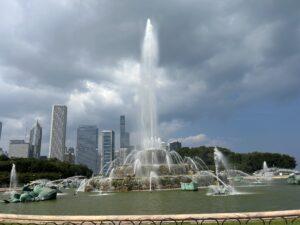
In the vast realm of intellectual property, trademarks stand as the guardians of brand identity, distinguishing businesses and products in a crowded marketplace. When it comes to obtaining an international trademark, a meticulous process is in place to ensure that brands are recognized and protected across borders. Here’s a step-by-step guide to the journey of securing an international trademark:
**1. Conduct Comprehensive Research**
The first crucial step is conducting a thorough trademark search. This involves investigating existing trademarks that might be similar to your intended mark. A comprehensive search helps identify potential conflicts and allows adjustments to be made before proceeding further.
**2. Determine the Scope of Protection**
For international trademarks, entrepreneurs have the option to seek protection in multiple countries through various mechanisms. One popular route is the Madrid System, administered by the World Intellectual Property Organization (WIPO), which streamlines the process of obtaining trademark protection in multiple countries.
**3. Draft and Submit the Application**
Once the scope of protection is determined, the next step involves drafting a well-crafted trademark application. This application includes detailed information about the mark, its usage, and the goods or services it will represent. The application is then submitted to the appropriate national or regional trademark office or through the Madrid System.
**4. Examination and Review**
After submission, the trademark office reviews the application for compliance with its regulations and for potential conflicts with existing trademarks. This process ensures that the mark is distinctive and not likely to cause confusion among consumers.
**5. Publication and Opposition Period**
In some jurisdictions, the trademark application is published for a specific period, during which interested parties can oppose the registration if they believe it conflicts with their own trademarks. This period allows for the resolution of potential conflicts before the mark is officially registered.
**6. Registration and Protection**
Upon successful examination and resolution of any oppositions, the trademark is registered and granted protection. This protection grants the owner exclusive rights to use the mark in connection with the designated goods and services.
**7. Maintenance and Renewal**
Trademark protection is not indefinite. Depending on the jurisdiction, trademark owners must periodically renew their registration to maintain their rights. Regular monitoring is essential to ensure that the mark continues to be valid and enforceable.
**Conclusion: Safeguarding Brand Identity on a Global Scale**
Obtaining an international trademark involves a strategic and systematic approach to protect brand identity across borders. This intricate process, guided by IP attorneys, ensures that entrepreneurs can confidently navigate the global marketplace while safeguarding their unique brand identity. Just as IP attorneys are the custodians of creativity, international trademarks serve as the guardians of a business’s reputation and recognition on a global scale.